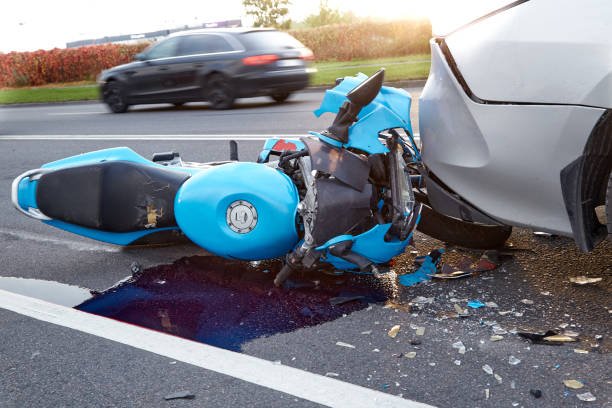
In traffic laws, the concept of ‘right of way’ is a fundamental principle that governs interactions between motorists. However, when these rules are violated, accidents happen – often with devastating consequences. This is particularly true in motorcycle cases due to their relative vulnerability compared to larger vehicles. This blog post highlights right of way violations and their implications in motorcycle accident cases.
Understanding Right of Way Violations
The term ‘right of way’ refers to the legal entitlement of one vehicle or pedestrian to proceed ahead of others under specific circumstances. These rules are designed to maintain order and road safety by dictating who has priority in different situations.
Right-of-way violations occur when a driver fails to yield where required, potentially leading to collisions. Common scenarios include failing to stop at red lights or stop signs, not yielding at crosswalks or intersections, and ignoring signals from other drivers.
Implications for Motorcycle Accidents
Motorcycles are inherently more vulnerable than cars due to their size and lack of protective structures like airbags or steel frames. Consequently, motorcyclists often suffer severe injuries in accidents caused by right-of-way violations. Heavier bikes are more likely to cause more damage after a crash. Nonetheless, even protective gear cannot shield a rider from life-threatening injuries after a high-speed crash.
Moreover, because motorcycles are less visible than larger vehicles, drivers may fail to notice them when making turns or changing lanes – another common cause for right-of-way violation accidents involving motorcycles. This is one of the primary reasons why bikers get in accidents. There is usually a miscommunication with others on the road, sometimes leading to tragic outcomes.
Legal Aspects
In legal terms, demonstrating that a driver violated the right-of-way can be crucial evidence in establishing negligence – a key factor in personal injury lawsuits following motorcycle accidents. If it can be proven that another driver’s failure to yield was responsible for an accident causing injury or damage, they may be liable for compensation.
However, proving this violation can be complex, requiring thorough investigation and expert testimony about traffic laws and accident reconstruction. A lawyer will work diligently to build a compelling case by organizing and presenting evidence strategically. They will analyze the circumstances of the accident, assess the extent of your injuries and damages, and develop a legal strategy to prove the other party’s fault.
Key Considerations
Evidence is critical after any accident, especially in cases involving potential right-of-way violations. This could include photographs from the scene showing road conditions and vehicle positions; witness statements; surveillance footage if available; police reports detailing findings from initial investigations; medical records documenting injuries, etc.
Given the complexities of proving negligence based on right-of-way violations, having experienced legal representation is essential. A skilled attorney will understand how best to gather the necessary evidence and present your case effectively.
Dealing with insurance companies after an accident can be challenging as they often seek ways to minimize payouts. Insurance companies are known to employ tactics to protect their interests. An attorney can help negotiate fair settlements while ensuring your rights are protected. They will also be your point of contact for the insurance agents, who will likely require a ton of information to get started. This step is crucial for victims of accidents because the priority should be to heal and not to negotiate with insurance agents.
Conclusion
Understanding right-of-way violations is crucial for safe driving, and if you find yourself involved in a motorcycle accident resulting from such a violation. By being aware of these principles and knowing what steps need to be taken following an incident – including gathering evidence promptly and securing competent legal representation – you’ll stand a better chance at achieving a just outcome should you ever need to pursue a compensation claim against the negligent driver who failed to respect your rightful place on roadways.



